SHP Revisit , from Sunday, Aug 24, 2008
This new SHP about
Chain of Ponds has more photo's and Info
The ‘
Chain of Ponds’ initially described a
creek which ran all the way from beyond
Kersbrook to its confluence with the River Torrens near Prairie in the
Adelaide Hills, South Australia. The area was dotted at regular intervals with small ponds, having no visible connection above the ground but never drying up even in the driest, hottest summers. Much of the chain of
water holes known as the
Chain of Ponds vanished under the waters of the
Millbrook Reservoir in 1918.

The Chain of Ponds
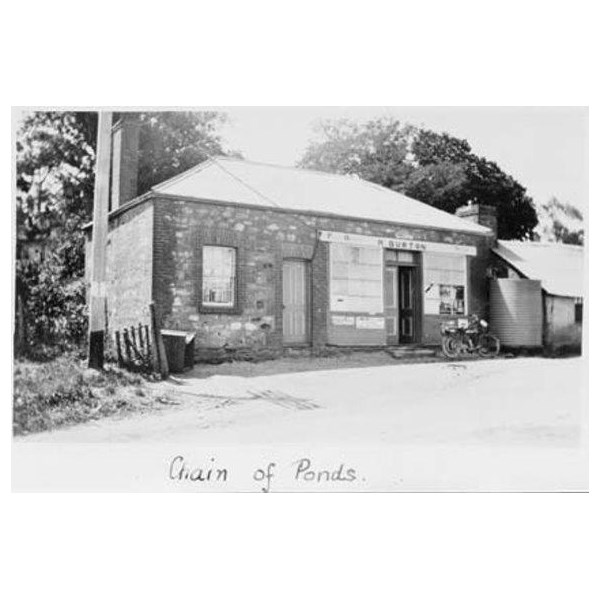
Chain of Ponds PO, 1901
THE EARLY YEARS
Philptown was the location and original name of the
Chain of Ponds site and was named after the founding publican, Oliver Philp of the Morningstar Hotel. It was established around 1850. The township later changed its name to
Chain of Ponds in 1864. It was initially a postal village, and played a stopover role in the difficult trek across the ranges. Of significant importance in the early days were its location and the fact that it was used as a resting place.
The roads were very poor indeed and travel through the area was extremely difficult, due to the hilly terrain and thick dense scrub. The
Adelaide to
Mannum coach service from the mid 1850’s used the Hamlet as one of four changing stations through the
Adelaide hills on their trek to
Mannum.
In 1866 the Local South Australian Gazetteer described the
Chain of Ponds as “having a fine spring flowing through it. The stream being imbedded in
water cresses, which grow all year round!”

Perce and Ivy Curtis' House at Chain of Ponds

An oversized load 1950s style at the Willow Roadhouse , Chain of Ponds
The Willow Roadhouse was built by my Father, so it was home for me during the 1950's until we moved to
Eden Valley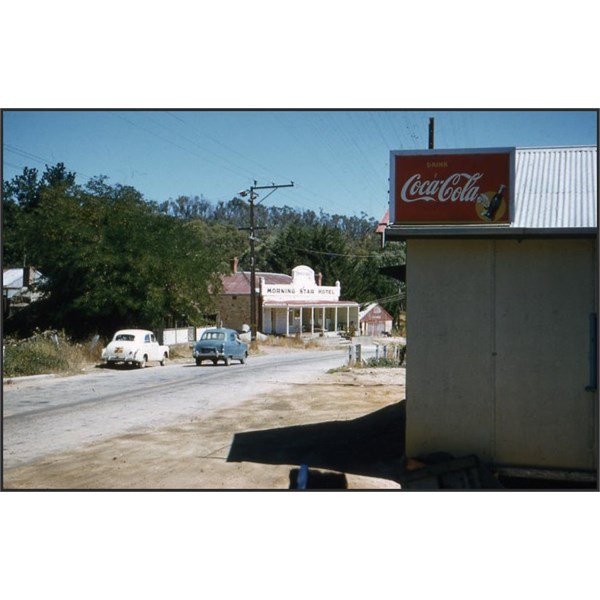
Chain of Ponds 1957
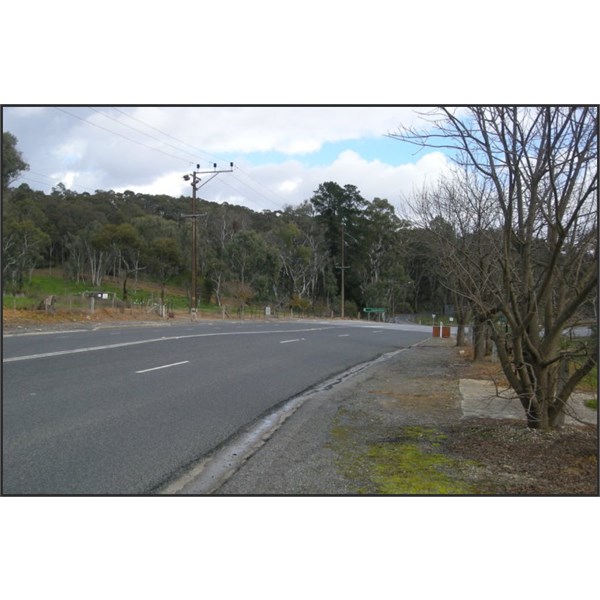
Chain of Ponds 2007

Our Home at Chain of Ponds, Perce and Ivy Curtis' House behind
The neighbourhood was said to be celebrated for its vineyards and fruit trees.
Wine grapes were first planted in the
Adelaide hills in the early 1840’s. Situated east of
Adelaide, the long and narrow
Adelaide Hills region runs through the southern Mt. Lofty ranges.
One of the earliest wineries and vineyards in the area is mentioned in the
Adelaide papers for sale as follows: 1865 — Swithen Farmer— Section 6131 "Chain of Ponds". Winemakers plant complete with several thousand gallons of wine, wine presses, fermenting vats, casks, large boilers. Wine vintages 1863-1865. 16 acres of vineyard.
The Morning Star Hotel was originally established by Oliver Philp in 1847 at Timnath, 2km from
Chain of Ponds. The road through the area was however diverted in 1852 and Oliver Philp then relocated the hotel to the new
Chain of Ponds site around 1851, where the road passed.

Chain of Ponds Morning Star Hotel 1920
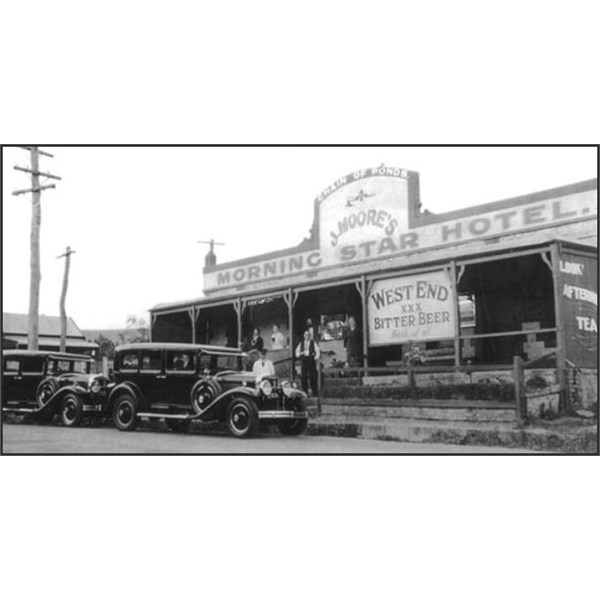
Morning Star Hotel.
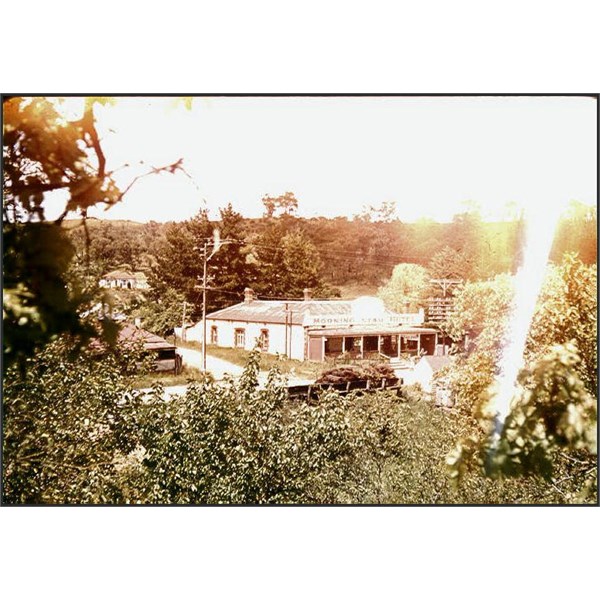
Morning Star Hotel viewed from Curtis' house
A local correspondent for the
Adelaide Register paper wrote on 7 April 1919. “In recent years great changes have taken place in this vicinity, but when the hand of the destroyer trampled the Old Morning Star hotel to the ground it removed one of the oldest landmarks outside the metropolitan area. This hotel was erected in the early days and has been to many weary travellers a real haven of rest. Later on the building was enlarged, and stone, brick, and a considerable amount of clay were used in its reconstruction. The Morning Star was...one of the busiest
places of call between
Adelaide and the River Murray”.
Sadly the Hotel was eventually demolished for the last time in 1976.
The
shop was burnt down about 1960/61, the girl is my younger Sister
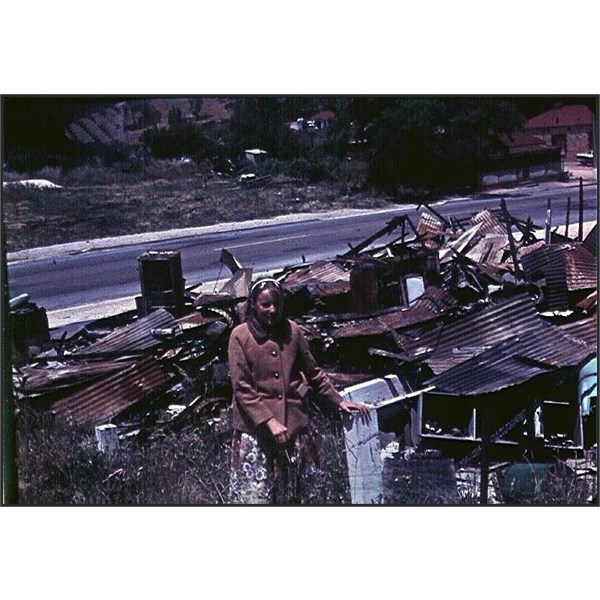
Chain of Ponds Shop Fire Ruins
.